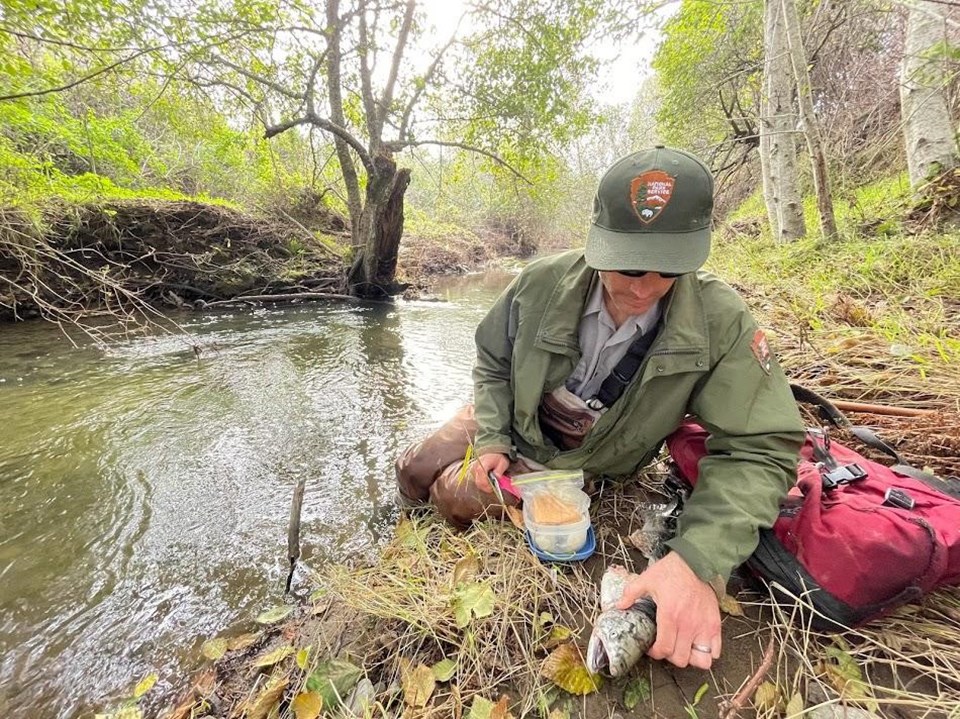Last updated: October 10, 2024
Article
Kings Continue to Make a Splash in Bay Area Streams

NPS / Elek Yozie
By Tara Blake and Natale Urquhart
December 2, 2021 - This year Redwood Creek, Olema Creek, and Pine Gulch are all playing host to adult Chinook salmon, also known as king salmon due to their impressive size, for the first time in monitoring history.
To date, our San Francisco Bay Area Network fisheries crew has recorded over 80 Chinook across the creeks we monitor! We’ve counted over 70 in Redwood Creek alone. For comparison, the highest historic number of adult Chinook for Lagunitas Creek, the nearest creek with a frequent spawning run, was 65 in the 2018-2019 season.
The king salmon we have documented this season likely spent their juvenile years in a hatchery before being released as smolts—most likely into San Francisco Bay by the California Department of Fish and Wildlife (CDFW). After rearing to adulthood in the Pacific Ocean, they used their strong sense of homing to guide them to freshwater systems to spawn. So far, fish observed during our spawner surveys, including unidentified salmonids, have created a total of twenty nesting sites, known as redds, in Redwood Creek and four in Olema Creek.
After spawning, the salmon die and their life cycle is complete. As we survey, we look out for their white carcasses contrasted against the darker creek gravels. When we come across a Chinook carcass, we take scale and tissue samples, along with the head if it is a hatchery fish (hatchery fish are missing a small fin on their back). We send scale and tissue samples to a lab for age and genetic structure analysis, while the Chinook heads will be given to CDFW staff for recovery of coded wire tags that were inserted into their snouts when the fish were juveniles. If the carcass is a coho salmon, we will also remove the calcium deposits, called otoliths, from the inner ear within the brain cavity. Otoliths are used to age the fish—they have growth markings similar to the rings of a tree. We have already collected samples from close to 25 carcasses this season and expect to collect many more.

NPS / Tara Blake
As we move into the winter months, we hope to see more coho returning to their natal streams to spawn, but for now, we will continue to monitor the anomalous influx of Chinook.
For more information
- San Francisco Bay Area Network Salmonid Monitoring webpage
- Pacific Coast Science & Learning Center Coho & Steelhead webpage
- Contact Fishery Biologist Michael Reichmuth
See more from the Bay Area Nature & Science Blog
